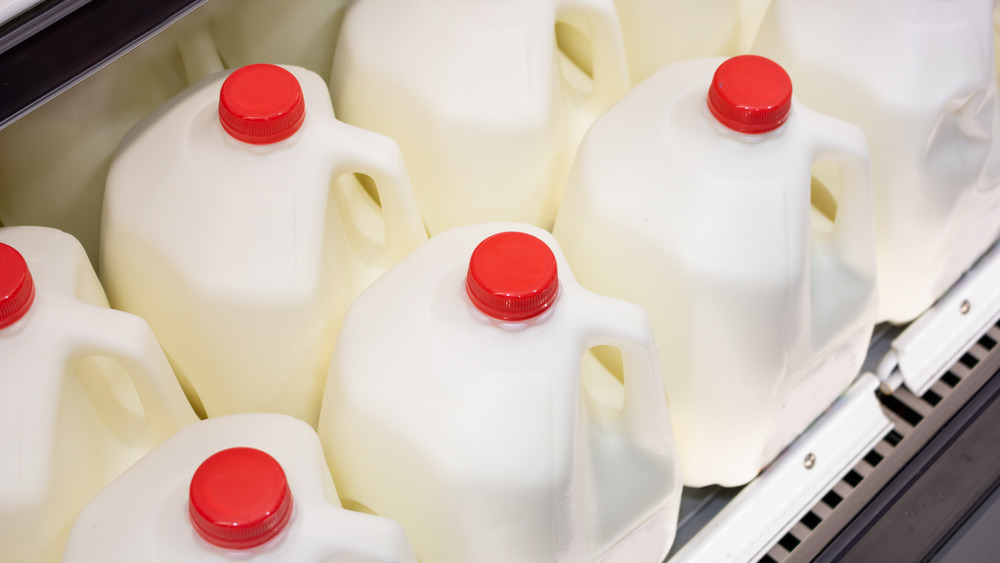Here's Why Vitamin D Is Added To Milk
If you drink store-bought cow's milk, chances are that it contains more than just milk. It's probably been fortified with vitamin D, whether the milk label advertises the fact or not (if it doesn't, the ingredient list will). Although adding vitamin D to milk is not an FDA requirement in the U.S., most milk producers voluntarily add it anyways, and have been doing so since the 1930s.
Vitamin D fortification began as a response to alarming rates of rickets — a disease that seriously hampers bone development in children, and can result in deformities. It's caused by a deficiency of vitamin D and calcium, which are closely connected since our bodies need vitamin D to be able to properly absorb calcium. Patsy M. Brannon, a professor in the Department of Nutrition at Cornell University, told HuffPost, "Rickets became an epidemic as you had the Industrial Revolution and with it, childhood labor." Kids weren't getting enough sunshine. And since there are only a few good food sources of vitamin D — including fatty fish like salmon and tuna, and egg yolks — deficiencies became rampant.
Vitamin D-fortified milk can help prevent deficiencies
Our bodies make vitamin D when skin is exposed to the sun. Today, since people spend much of their time indoors and wear vitamin-D-inhibiting sunblock when outside, getting enough of the 'sunshine' vitamin is still a problem, especially in northern climates. That's where fortified food products – especially milk – play an important role in helping prevent deficiencies. In fact, studies in Finland found that 91 percent of milk-drinkers had adequate vitamin D levels, compared to only 44 percent prior to fortification (via Healthline).
For most of us, it doesn't take that much time outside — only about 15 minutes a day in direct sunlight — for our bodies to manufacture all the vitamin D we need (via Fox). But even that can be hard to get at times. In that case, it's a good idea to keep the vitamin D milk on hand.


